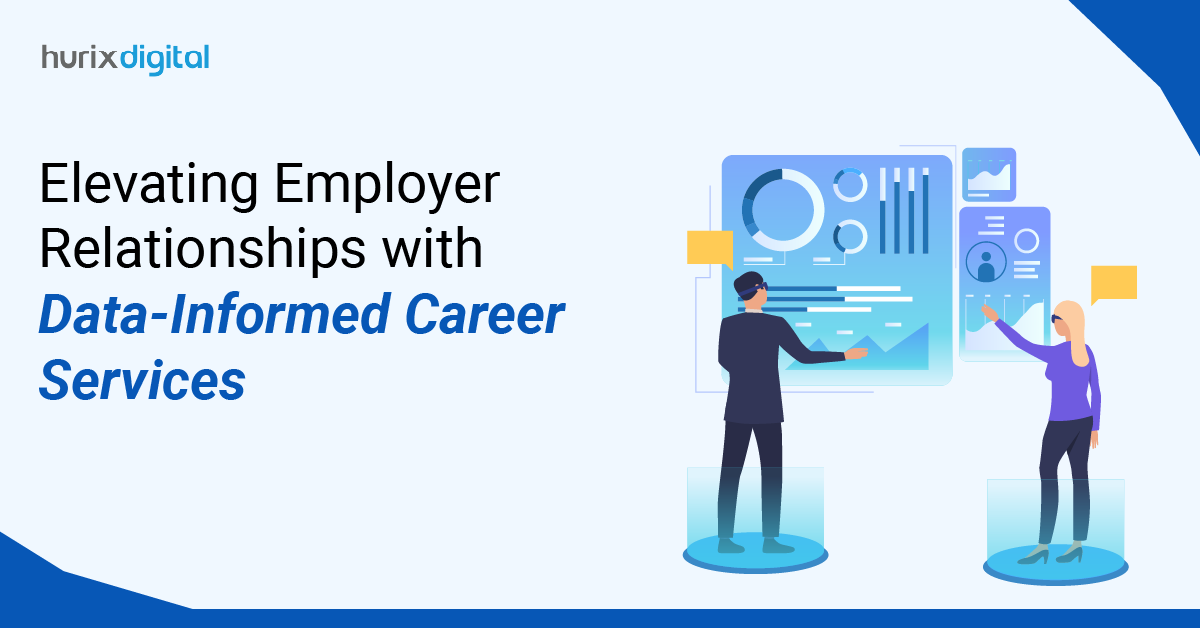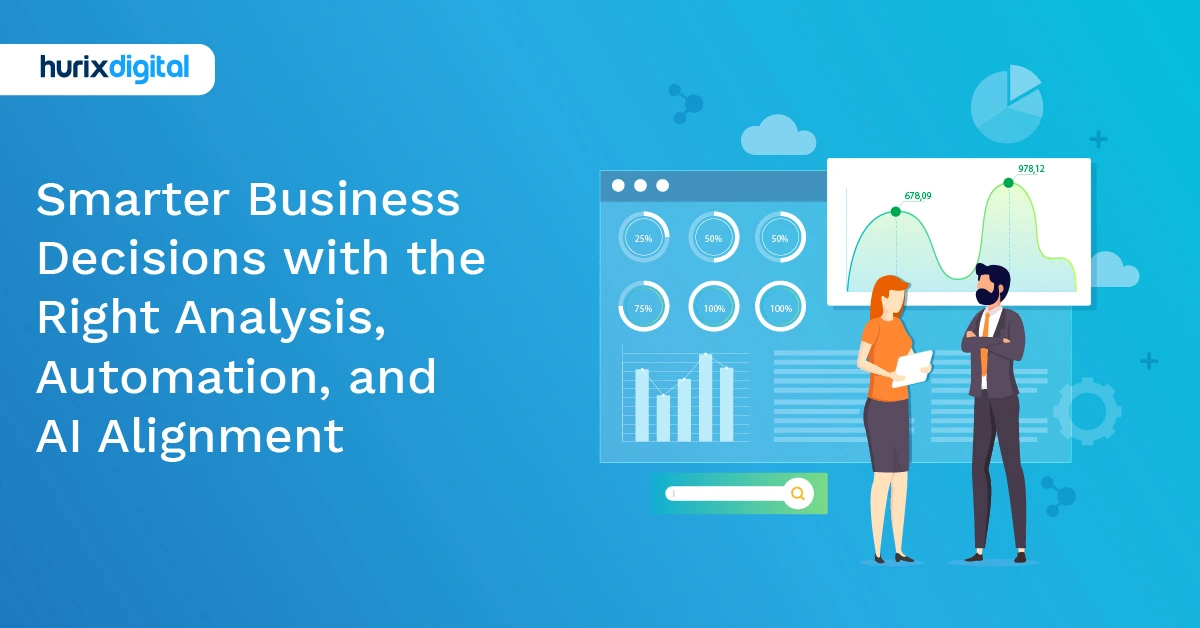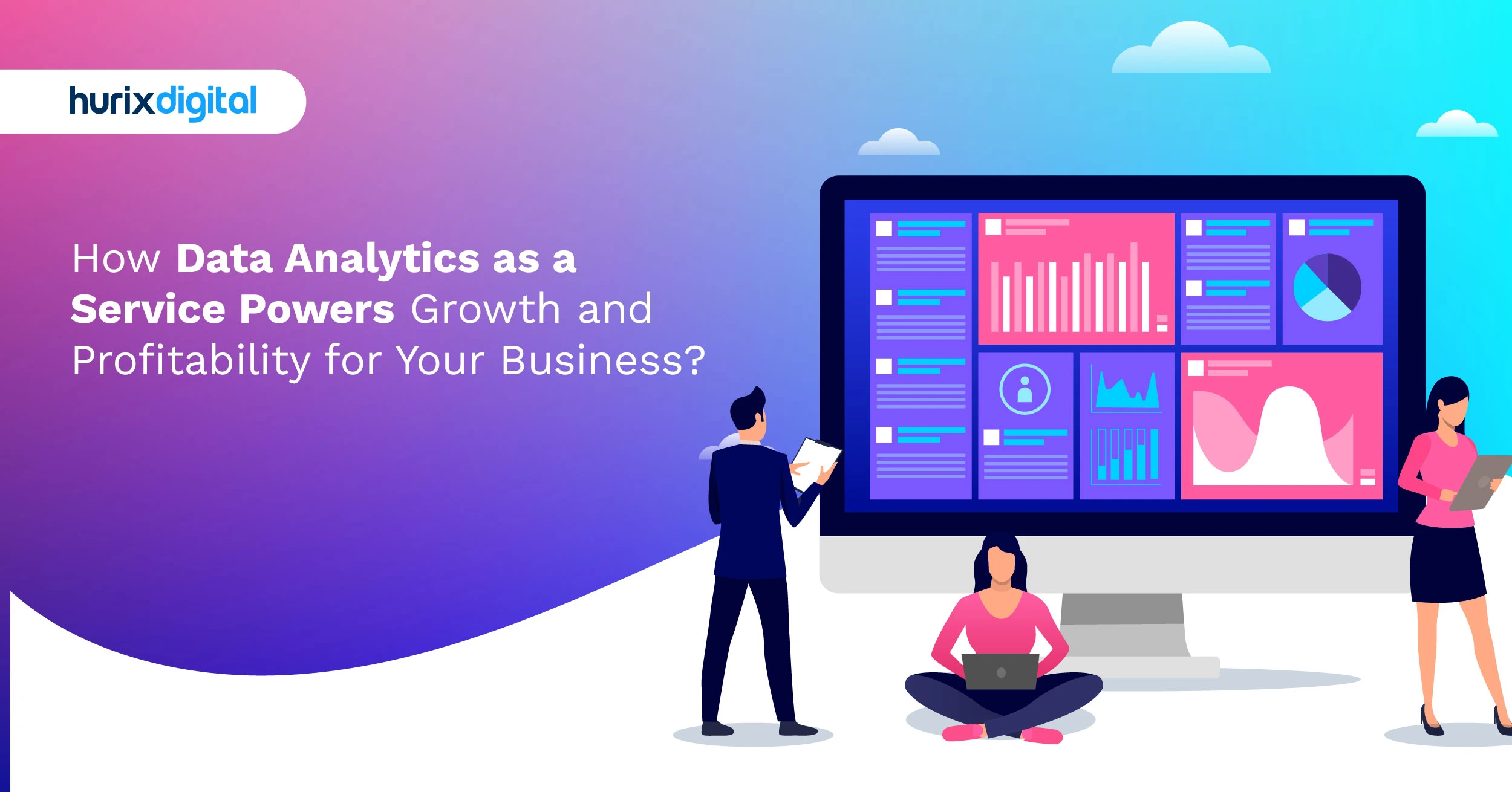
Elevating Employer Relationships with Data-Informed Career Services
Summarize with:
Navigating the intersection of education and industry demands a precise blend of insight and innovation. As the corporate world pivots rapidly with technological progress, workplace-ready skills become more critical than ever.
Data-informed career services are revolutionizing this dynamic, enabling educational institutions to fine-tune their offerings to match the marketplace’s pulse precisely. This approach aligns educational outcomes with real-world needs, boosts job placement rates, and strengthens industry collaborations.
McKinsey’s insights support the urgency of such adaptability. Projections suggest that by 2030, up to 375 million workers globally will need to transition to new job roles due to automation.
Through the strategic use of career services analytics, educational institutions react to changes and actively shape their students’ futures. This ensures they emerge as indispensable assets to their respective fields.
Table of Contents:
- The Role of Data in Modern Career Services
- Key Benefits of Career Services Analytics
- Strategies for Enhancing Employer Engagement
- Building Industry-Academic Partnerships with Data
- Leveraging Technology for Efficient Data Integration
- Conclusion
The Role of Data in Modern Career Services
The transition to data-informed strategies marks a pivotal evolution in career services within academic institutions. By embracing labor market analytics tools, these departments can decode complex job market trends and real-time employer needs. This ensures educational offerings are finely tuned to meet current industry demands.
Moreover, this data-driven approach extends to enhancing student readiness for the workforce. Career services utilize analytics to pinpoint and address skill gaps among students. This effectively tailors educational interventions, preparing them robustly for employment. It ensures that graduates are workforce-ready and equipped with highly-demanded skills.
According to the World Economic Forum, 75% of companies intend to implement big data, cloud computing, and AI technologies in five years. These technologies are anticipated to increase employment opportunities, especially in technology-related positions.
Such positions include AI and Machine Learning experts, Information Security Analysts, and Business Intelligence Analysts. This trend highlights the importance of career services evolving with technological advancements and the importance of actively training students for emerging, in-demand positions.
By 2027, six out of ten workers will need some form of training, yet currently, only half have access to adequate training opportunities. This gap stresses the importance of integrating data-driven insights into career services.
Such integration better aligns training with industry requirements, thus enhancing employability and job placement outcomes. This stark contrast underscores data analytics’s critical role in shaping the future of education and workforce readiness.
Also Read: What CIOs and CTOs Should Know about the Future of Salesforce Integrations!
Key Benefits of Career Services Analytics
Career services analytics amplify employer engagement strategies by providing precise data-driven insights, which are crucial for aligning academic outcomes with market needs. Here’s how analytics are reshaping employer engagement:
1. Enhanced Decision-Making
Analytics can reveal macro and micro insights about the job market through creative data sourcing and robust model building. This holistic view helps institutions understand the nuanced demands of various industries. It allows them to tailor their outreach and engagement strategies effectively.
2. Optimized Employer Relations
With advanced analytics, career services can predict employment trends and optimize programs to meet employer expectations. This proactive approach prepares students better and enhances the institution’s reputation among potential employer partners.
Here are examples of actionable insights from career services analytics:
- Skill Gap Analysis: Through analytics, we can pinpoint skills highly sought after but lacking among students. Colleges can modify their academic programs to fill these deficiencies, helping their students become more appealing to potential employers.
- Feedback Integration: Incorporating employer feedback allows institutions to improve their programs constantly. This continuous improvement ensures that the curriculum stays updated with changing industry regulations, enhancing job placement rates.
Strategies for Enhancing Employer Engagement
Effective employer engagement strategies in career services align educational outcomes with workforce needs. Here’s how data-driven approaches and employer feedback integration can tailor engagement to meet specific employer needs:
1. Employer Feedback Integration
Regular employer surveys and feedback mechanisms are essential. This direct input helps institutions understand and adapt to employers’ evolving requirements. It ensures that the curriculum and student training align with industry standards.
The feedback can also guide the development of new programs or the adjustment of existing ones. This helps better prepare students for the demands of the workplace.
2. Data-Driven Employer Relations
Using data analytics can greatly improve how institutions interact with employers in terms of Employer Relations based on data. Career services can create specialized strategies for various industry sectors based on employment trends and employer requirements analysis.
For example, data insights can be used to pinpoint highly sought-after skills that are lacking supply, enabling institutions to modify their training programs as needed.
These tactics promote more robust collaborations and improve the institution’s capacity to prepare students for their future professions adequately. Utilizing customized strategies guarantees that students are prepared for the job market and are in demand by employers. This results in improved job placement rates and stronger connections with the industry.
Building Industry-Academic Partnerships with Data
Data-driven strategies are crucial for encouraging strong industry-academic partnerships. Here’s how institutions can leverage data to enhance these collaborations and align curricula with employer expectations:
1. Establish Clear Analytics Goals
Senior leaders must emphasize that analytics is a strategic asset beyond mere compliance. By positioning analytics as a source of innovation, institutions can harness data to improve the entire student journey from application to alumni engagement and enhance research and teaching outcomes.
2. Centralize Analytics Functions
To overcome the fragmentation often seen in higher education data handling, it’s advisable to establish a central analytics team. This team should have direct reporting lines to top executives to ensure data-driven insights are integrated at the highest levels of decision-making.
3. Utilize Data for Curriculum Alignment
Regular data analysis can help institutions understand and predict changing industry needs, allowing the curriculum to be continually updated to meet these demands. This alignment ensures that students are equipped with relevant skills in demand in the workforce, thus enhancing their employability.
4. Promote a Culture of Data Utilization
Promoting a culture supporting data-based decisions can greatly enhance academic and operational results. Institutions must incorporate data analytics into daily operations and strategic planning to be adaptable and responsive to academic and industry advancements.
5. Link Analytics to Institutional Goals
Effective use of data analytics should be tied to specific, strategic goals within the institution. This approach optimizes educational outcomes and ensures the institution remains competitive and relevant in the rapidly changing academic landscape.
6. Anticipate Labour Market Churn
Employers expect a large turnover in the labor market of approximately 23% in the next five years because of technological advancements and macroeconomic shifts, as the World Economic Forum reported.
This turnover demonstrates the significance of flexible skills and data-based career services. It emphasises the essential nature of these collaborations due to the combination of new and displaced jobs.
Leveraging Technology for Efficient Data Integration
Technological advancements are pivotal in streamlining data integration and analysis in career services. Here’s how software and tools contribute to this process:
1. Advanced ETL Tools
Software like Oracle Data Integrator simplifies the extraction, transformation, and loading (ETL) of massive data sets, facilitating smoother integration with other platforms. This tool replaces complex coding with a user-friendly interface, making data more accessible and understandable.
2. Comprehensive Data Platforms
Platforms that offer a 360-degree view of key entities such as employers or alumni enable career services to have actionable insights at their fingertips. These insights are crucial for tailoring engagement strategies and ensuring that students meet the evolving demands of the workforce.
3. Real-Time Analytics Software
Tools that provide real-time analytics allow career services to make immediate adjustments based on current market trends and feedback. This ensures that the institution remains adaptive and responsive to employer needs.
Also Read: Trends in Modern Website Development: Voice Interfaces, AI Integrations, and Beyond
Conclusion
By integrating sophisticated data analysis tools and software, institutions can streamline operations and improve their strategic interactions with industry partners.
As educational institutions strive to remain competitive and relevant, adopting these data-driven approaches can be a game-changer. Consider how your institution could benefit from such innovations in career services.
Interested in taking the next step towards integrating advanced analytics into your career services? Contact Hurix Digital to discover how our expertise can help you transform your institution’s approach to career readiness and employer partnerships.
Get in touch with us to get started!
Summarize with:

Vice President & SBU Head –
Delivery at Hurix Technology, based in Mumbai. With extensive experience leading delivery and technology teams, he excels at scaling operations, optimizing workflows, and ensuring top-tier service quality. Ravi drives cross-functional collaboration to deliver robust digital learning solutions and client satisfaction
 Upcoming Masterclass | Build an Army of Brand Evangelists using Training & Development | November 20th, 8:30 AM PDT | 11:30 AM EDT | 10:00 PM IST
Upcoming Masterclass | Build an Army of Brand Evangelists using Training & Development | November 20th, 8:30 AM PDT | 11:30 AM EDT | 10:00 PM IST




